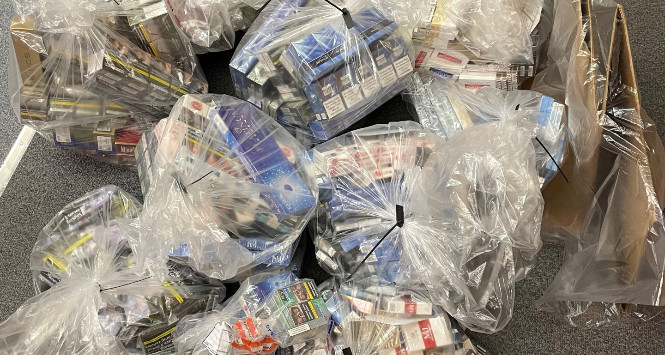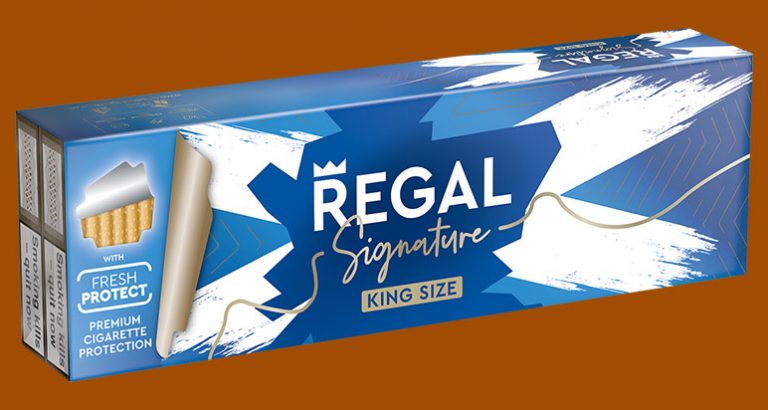With the tobacco display ban in force for three months now, SLR hosted a retailer roundtable in association with Scandinavian Tobacco Group UK to discover if sales have grown in convenience, and what the future of the category will look like.
by Kevin Scott
Arguably the biggest change to the grocery industry since the introduction of the Licencing (Scotland) Act 2005, the tobacco display ban has altered the way stores over 280 sq m can do business. Smaller stores will follow in 2015, but until then many observers believe c-stores have a competitive advantage over supermarkets which they can use to boost sales. Last month SLR teamed up with Scandinavian Tobacco Group UK to hold a roundtable discussion with a group of local retailers to discuss the impact of the display ban and look at the overall tobacco category.
Gathering in Glasgow, our assembled retailers introduced themselves and their businesses and SLR was quick to highlight that between them, the five retailers had over 120 years of experience behind the till. Not bad going if you’re looking for an informed opinion.
It was clear from the initial discussion on the importance of tobacco to convenience stores that it still represents a huge portion of income. The consensus in the room suggested that tobacco sales generate around 25-30% of overall revenues, though with margins as low as they are, retailers admit that it is the footfall they drive as well as the profits they genenrate that make them so important. One interesting point of note was that Chris McCallum said tobacco sales are 40% in one of his stores – one he said is a more deprived area.
On with the show, and after an introduction from Head of Marketing Alan Graham, explaining the role of STG UK and its brand such as Café Crème and Natural American Spirit, the discussion immediately moved onto the question of whether convenience stores had seen any benefit from the large store display ban.
Julie Johnston – I’m finding it hard to judge if sales have gone up or not. It’s summer so a lot of people have been on holiday and they tend to bring cigarettes back with them.
Chris McCallum – I think there’s been a bit of an uplift. And while it’s difficult to accurately put a number on it, that will affect sales elsewhere in the store as people tend to buy other things along with cigarettes. I did think there would be an opportunity and it would seem that is happening.
Iqbal Sadeeq – We all know that there’s not much margin on tobacco, but we do a lot of volume. You do make a lot of money from it. And we obviously want to see that going up with this opportunity.
Ian Mitchell– It’s still early for discovering if there has been an uplift. The displays don’t look nice in supermarket though. I wouldn’t want that behind my behind my till. I’m not thinking about 2015 yet however. For me, it’s more about the opportunity that exists now.
Customer awareness
The display ban has been the talk of the trade for a long time now, but questions have always remained over awareness among consumers.
CM – Customers have discussed it with me since April. I can foresee many difficulties that come with even the staff not being able to see what’s stocked. For example, if a customer asks for a certain menthol brand for example and we don’t have it, not every member of staff will be able to know all the other menthol brands we do stock.
Mohammad Issa – Customers have been asking me why I’m still displaying cigarettes when the supermarkets aren’t. You try to help them out as much as you can. This may be the minority, but we have three deaf and dumb customers, and I genuinely wonder what they’ll do when they can’t even point at the product they want.
CM – On one occasion I had a customer tell a member of staff that we were trading illegally. MI – The price lists that will be our only method of communication are complicated. A lot of my customers are old and don’t wear glasses, so they would struggle with the size of print on the price lists.
IS – With new staff who don’t know their way about the tobacco fixture, it’ll be a nightmare with transaction times.
The enduring importance of tobacco
The fact that such an opportunity exists underlines the importance of the tobacco category to retailers – but is tobacco still as important as it always was?
CM – It’s one of our biggest footfall drivers so it remains hugely important.
IS – We all know that there’s not much margin on tobacco, but we do a lot of volume so you do make a lot of money from it.
MI – There is also the fact that customers buy other products along with their tobacco. I tend to find it’s juice, sweets, crisps. But of course, they’re now being targeted by the Government as well.
Driving sales
With brands and retailers unable to market products to customers, there are inherent difficulties in driving sales within the category, so how do retailers do it, and will the display ban opportunity help?
IM – It’s all about good retailing – having great ranging and merchandising is about all you can do.
CM – In simple terms, we just make sure the gantry is full with the right products in the right place, at all times.
IS – We use the EPoS to keep an eye on it. On the odd time we do run out of something we’ll adjust the next order accordingly. As categories go, it’s one of the easiest to manage.Customers don’t tend to be too interested in trying new products. It’s all just about price.
CM – The brands that were once bestsellers were always the same brands, but that’s changed now. It tends to be the cheaper brands that sell better. It’s all driven by price.
JJ – We have to follow set planograms that come from the Co-op head office in Manchester, so we buy single outers of new products but for the most part they don’t tend to sell that well.
Pack Sizes
While cigarettes are generally available in 10s and 20s, RYO products have more available SKUs – so how are trends developing in pack sizes?
JJ – Most of our sales come through what you’d call standard SKUs, but we do sell 40 packs and they are popular.
MI – People are buying more in bulk but that’s not something we want to see because it means you lose customer frequency and therefore the sales associated with tobacco are reduced.
Roll Your Own
The growth of the RYO category has helped the performance of the overall category in the last couple of years, but how have our panel seen the sector develop in their stores?
CM – RYO is a huge part of our tobacco business now. Golden Virginia used to be the only brand that sold, but it’s all changed.
IM – With the inclusion of free accessories it looks like the pack sizes are physically the same size but there’s less tobacco in them. Though I think there’s not enough papers and filters in the pack for the tobacco, so we do still get sales on accessories.
MI – I’ve noticed RYO sales going up. If we could only get rid of the illicit trade then those sales would go up even more.
Price Marked Packs
Tobacco, perhaps more than any other category, has embraced Price Marked Packs, but did our panel all use PMPs, and does it risk margin?
IS: While I’ve had great success with PMPs on 20s, I’ve resisted stocking PMPs in 10s. I want to ensure there is still value in the smaller packs.
IM – People aren’t as brand loyal as they used to be. It’s all about price now.
Room in full agreement with this.
CM – Mults don’t do PMPs so there’s no real competitive advantage.
JJ – We don’t have too many PMPs. I know they’re prevalent in the tobacco category but we’ve stayed away from them. Although they are beginning to appear in our RYO stock.
The Illicit Trade
Aside from legislation, the biggest threat to sales of tobacco is the illicit trade. With tobacco manufacturers arguing that increasing legislation fuels the illicit trade, had our panel directly noticed counterfeit or smuggled products near their store?
IM – We do notice it in South Ayrshire. It’s more of a summer thing; you start to see more foreign brands. It’s a concern. It means we could be losing out on sales.
JJ – I’ve called the police in the past. We know of a pub where someone has been selling them. People were stealing from us and selling it on in the pub too. Our area manager has passed the information onto HMRC as well. The pub is under new management now and there is a better relationship.
IS – It is something that does affect business. There’s more and more of it around. We’ve actually had people in the shop trying to sell illicit products to staff. I don’t know how much is being done about it – if someone is caught, someone else will take their place the next day.
MI – When retailers report something and nothing happens then they lose faith in the system. There are a lot of retailers affected by this – a lot of town centres are empty and the Government needs to act. If it was dealt with properly it would help the bigger picture.
IM – We used to work with police a lot but in the last year or so we’ve seen them less. That might be a good thing right enough, it may mean that crime in the area is down.
IS – There has to be a discussion with customers on what they’re actually smoking when they buy these fake cigarettes.
IS – We know there was a huge increase in smuggling in Ireland when the display ban came into force there – have no lessons been learned by the authorities in this country?
And on that note, we ended proceedings, a little bit wiser than before we’d begun.







